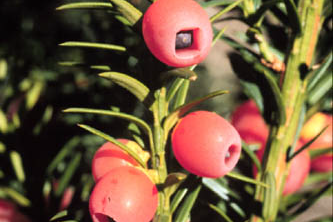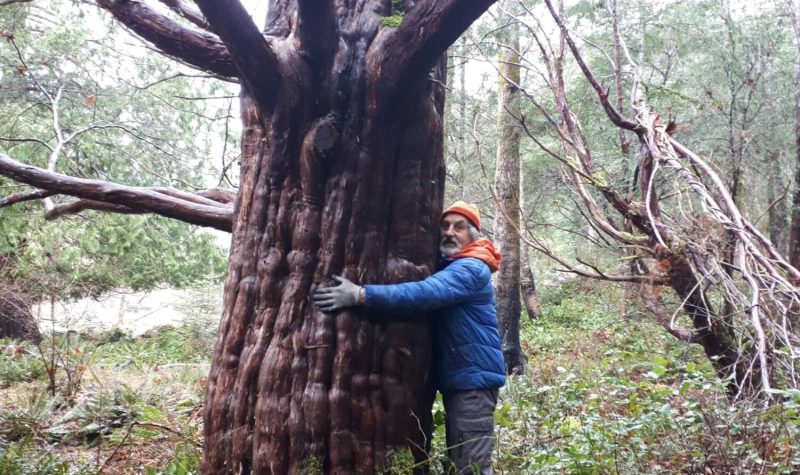Shortly after buying his property decades ago, local carpenter Hugh Barton found what might be the largest Western Yew on the Cortes Island. Barton doesn't know how old the tree is, but it appears to be more than 10 feet around at the trunk, at least 200 years old, and likely avoided the first round of logging on Cortes Island in the early 1900s..
The Western Yew is native to BC. Most Western Yew on Cortes Island are second-growth, young and small, and usually mistaken for the far more common Western Hemlock to the untrained eye. The Western Yew has short, flat needles, similar to hemlock. It is unusual as it is the only conifer that produces berries. The berries are bright red similar to a huckleberry, except the Western Yew's berries are poisonous, according to a BC Government website.

Western (Pacific) yew berries. Photo courtesy of the BC government website
Barton says the Western Yew does not produce what is considered merchantable timber, is largely ignored within today’s forest management practices, and often cut and left unused. Because they are so slow-growing they are vulnerable to today's logging practices, and its rare to find one that has reached its maximum height of 20 meters, at a maximum age of around 400 years old.
Barton believes Indigenous people used the strong wood for making items such as bows, tools, paddles, and prying sticks. It is still used today for carving, and making bows and paddles. The tree was over-exploited in the 1990s after the bark was found to contain the anti-carcinogen compound, Taxol, used to make the drug Tamoxifen, which is now produced chemically.
Smaller Western Yew can be found elsewhere on Cortes Island, including in the Carrington and Green Valley forested areas.
Barton occasionally collects limbs that have fallen from the several large yew trees on the property to use in carpentry projects. He is excited that he continues to discover younger yews there, where growing conditions appear to be ideal for the tree.
CKTZ asked members of the Klahoose First Nation for a comment on local yew trees but they were unable to respond before this story went to air.
Listen to Hugh Barton talk about the yew he found:


